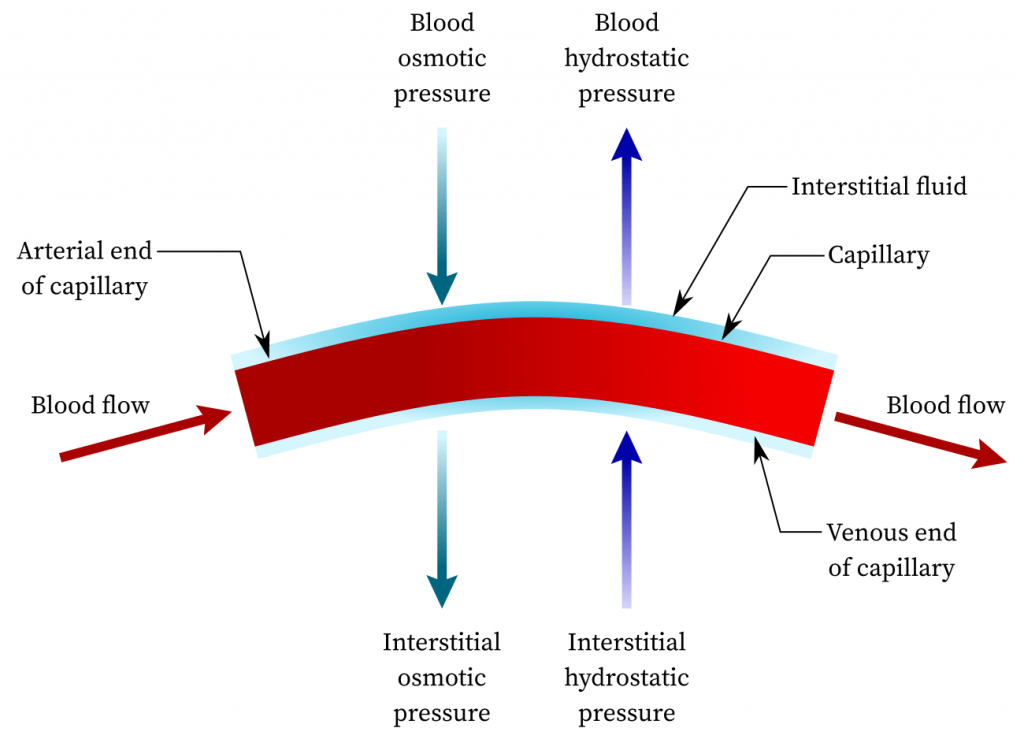Forces That Move Blood Through Capillaries
Published .

The capillary is the site of fluid exchange with the body’s tissues. This fluid transfer is moderated by two factors: hydrostatic pressure and osmotic pressure. Hydrostatic pressure is the “pushing” force on water due to the presence of more fluid in one region than another. In general, larger fluid volumes generate higher hydrostatic pressure. Osmotic pressure is the “pulling” force on water due to the presence of solutes in solution. Albumin proteins are the main source of osmotic pressure in capillaries, pulling water into the blood.
At the arteriole end of the capillary, the hydrostatic pressure is stronger than the interstitial osmotic pressure and fluid is forced into the interstitial space. Osmotic pressure remains relatively constant over the length of the capillary, but hydrostatic pressure drops sharply as it nears the venule end due to the initial loss of fluid volume. At that point, the interstitial osmotic pressure becomes stronger than the capillary’s hydrostatic pressure. This forces fluid back into the capillary.
